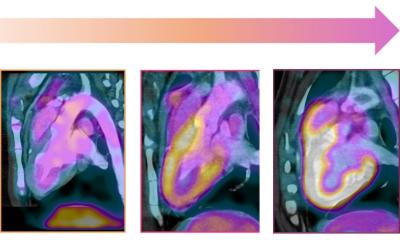MEDICA 2013
EndoMagnetics brings nanomedicine to breast cancer
It looks like a drug, it is injected in patients like a drug, but its acts like a medical device. Welcome to the new world of nanomedicine.

The CEO of EndoMagnetics, Eric Mayes, has succeeded in wining the agreement of both European and American regulators that the iron oxide nanoparticles injected in patients acts as a medical device and not should not be treated as a pharmaceutical.
"In the context of nanotechnology we are one of the first with a nano product in the device space that is approved, that is being sold and is actually being used in the clinic," he said.
"There will be plenty more nano-products coming behind us, but it is great to be one of the first, having survived all the challenges in the regulatory environment, the marketing of the system and then getting physicians to convert," said Mayes. Breast cancer is the first application for EndoMagnetic's lead products, the magnetic tracer Sienna+ and the magnetic detector SentiMag.
The solution of iron oxide particles is injected subcutaneously near the site of a known tumor to determine if the cancer has already spread. The sentinel lymph nodes that are the first to drain the tumor can be identified, surgically removed along with the tumor and evaluated. The result will determine if a woman needs chemotherapy, or not.
EndoMagnetics is challenging the established standard of care for this procedure which uses radioisotopes to identify sentinel lymph nodes. While it is effective, It is not available for up to 50% of breast cancer patients, due to the logistics of handling isotopes with a six-hour half-life. And it is not as cost-effective, according to Mayes.
The value of working with iron oxide on the nano scale, said Mayes, is designing particles that land in the "Goldilocks zone" required by lymph nodes.
"Particles smaller than five nanometers in diameter will shoot through the lymph node. If they are greater than 100 nanometers, they become gummed up on the way to the lymph node. If we have the size right, the particles will be filtered by the lymph nodes, they will accumulate in such a concentration that we can then detect them externally to the body with the SentiMag to help guide the surgeon," said Mayes.
The accumulation of iron is equivalent to two days dietary requirements, he said.
SentiMag is a magnetometer that creates a very small magnetic field to first excite the particles at a particular frequency, making them sing in resonance, he explained. Then the device listens for the response.
"The company founders engineered a very clever system that shields the sensor from everything but the particles being sought, which is a huge challenge because it is a tiny electronic signature we are listening for, measured in millionths of the earth's magnetic field," he said.
Since the product was launched in February, 2013, 90 systems have been sold in 14 countries through a strategic distribution agreement with Sysmex GmbH based in Hamburg.
"We are feeling a pull from the market," said Mayes. "The sales teams spoke to all the key opinion leaders and found a huge interest. It started to grow by word of mouth."
"We now have a revenue stream, we are operationally break-even, and in the first half of next year we will be profitable. Now the question is how quickly can we grow and where do we grow," he said.
In November the company was named one of two winners of the inaugural Nanomedicine Award from the European Technology Platform for Nanomedicine.
20.11.2013











